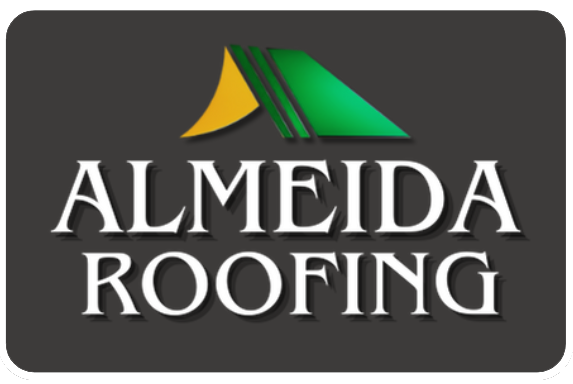Moisture Detection
Moisture damage is the most common form of deterioration for a building. Air leakage can cause condensation to form within walls, floors, or ceilings. Wet insulation takes a long time to dry and becomes a prime location for mold and fungi. Scanning with a thermal imaging camera can locate moisture that creates an environment conductive to mold. One might smell its presence, but not know where it is forming. A thermal survey will determine where moist areas are located that can lead to serious mold which can lead to health issues.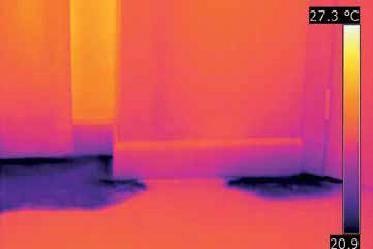
Moisture intrusion in floor, impossible to see with the human eye, but clearly visible on the thermal image.
Moisture can be difficult to spot and the trick is to make the construction change temperature. Materials with moisture will then be clearly visible as they change temperature much slower than dry materials. Where other methods only measure the temperature in one spot, thermal imaging cameras can scan an entire area rapidly.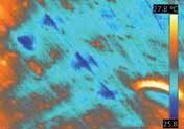
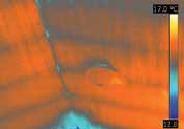
Thermal images taken of the same ceiling. In the left image the room temperature has been changed quickly by heating the room which makes the moisture clearly visible on the thermal image.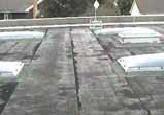
What an IR Thermometer sees.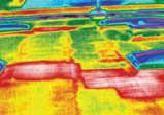
What a thermal imaging camera sees.
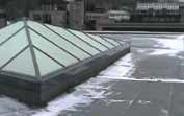
Glass roof above an atrium. It is watertight, but not air tight. Warm air escapes because of the over pressure.The solution is to air tighten the glass roof.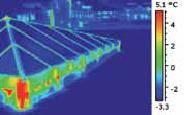
Moisture damage is the most common form of deterioration for a building. Air leakage can cause condensation to form within walls, floors, or ceilings. Wet insulation takes a long time to dry and becomes a prime location for mold and fungi. Scanning with a thermal imaging camera can locate moisture that creates an environment conductive to mold. One might smell its presence, but not know where it is forming. A thermal survey will determine where moist areas are located that can lead to serious mold which can lead to health issues.

Moisture intrusion in floor, impossible to see with the human eye, but clearly visible on the thermal image.
Moisture can be difficult to spot and the trick is to make the construction change temperature. Materials with moisture will then be clearly visible as they change temperature much slower than dry materials. Where other methods only measure the temperature in one spot, thermal imaging cameras can scan an entire area rapidly.


Thermal images taken of the same ceiling. In the left image the room temperature has been changed quickly by heating the room which makes the moisture clearly visible on the thermal image.

What an IR Thermometer sees.

What a thermal imaging camera sees.

Glass roof above an atrium. It is watertight, but not air tight. Warm air escapes because of the over pressure.The solution is to air tighten the glass roof.

